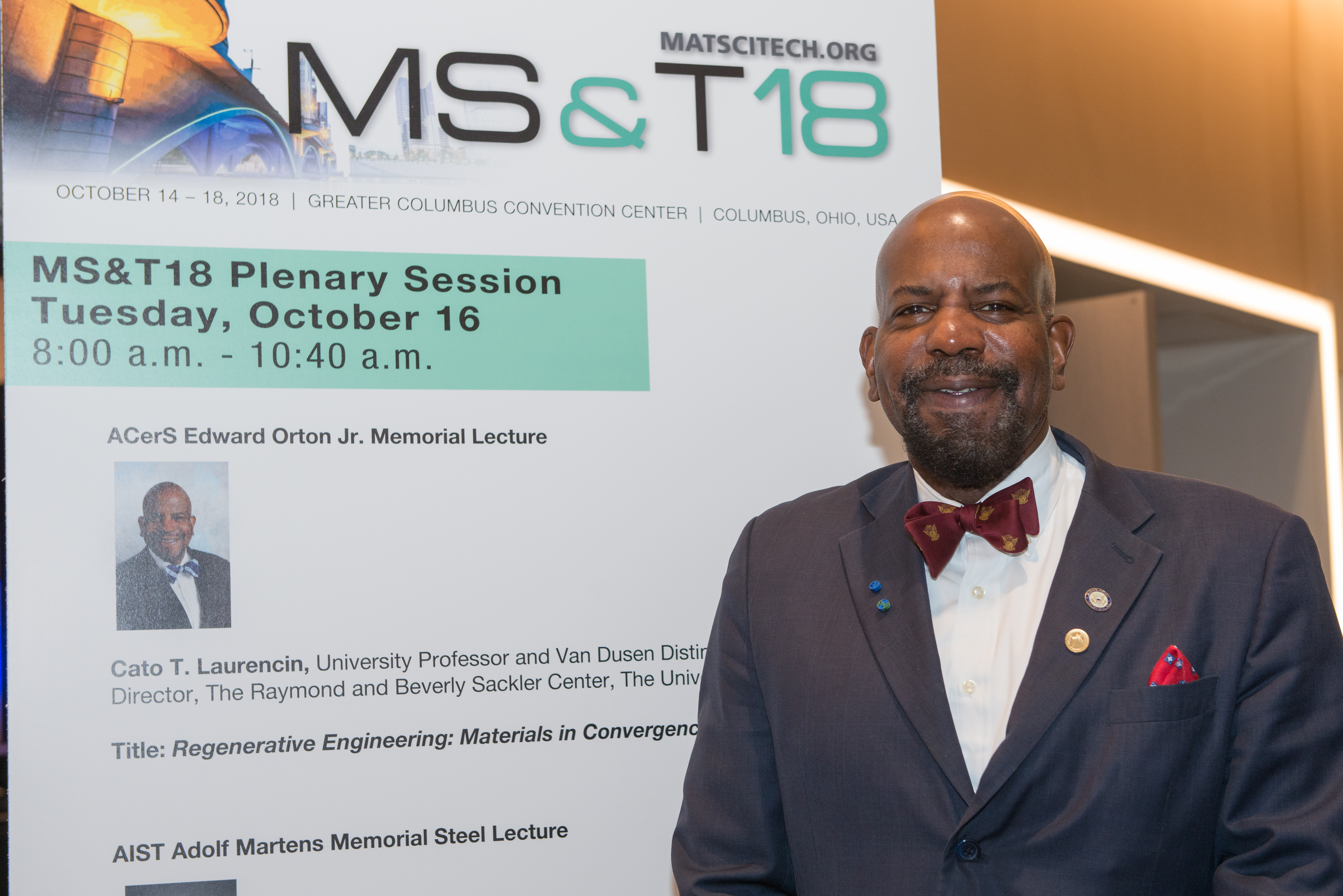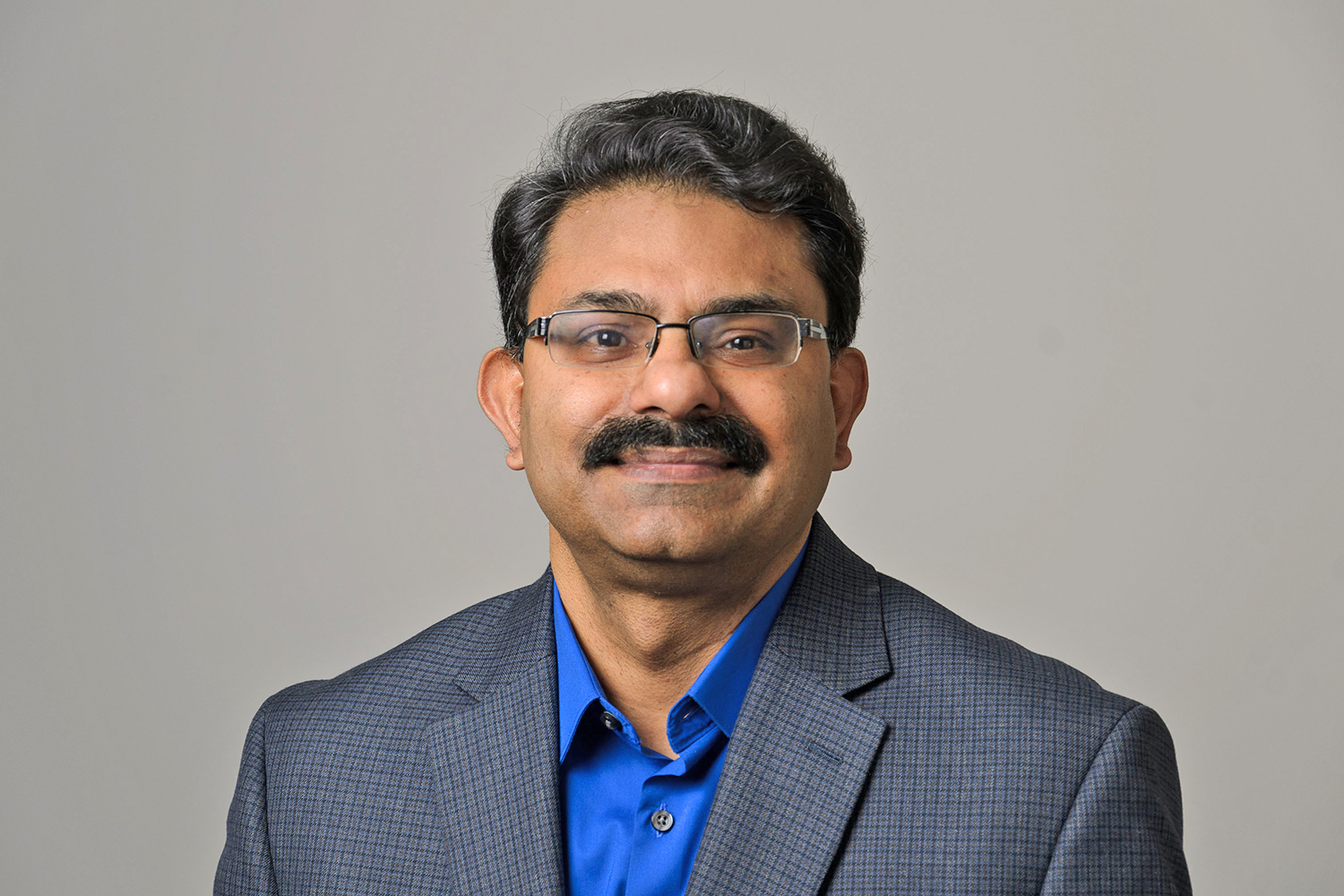Dr. Cato T. Laurencin, the University of Connecticut’s 8th University Professor in school history and Professor of Materials Science and Engineering gave the American Ceramic Society’s Edward Orton Jr. Memorial Lecture at the 2018 Materials Science & Technology Conference on October 16. His presentation led the Plenary Session for the scientific meeting.
The prestigious Orton Lecture, which is given by an individual with national recognition in their field, is named in honor of General Edward Orton, Jr., founder of the American Ceramic Society. Laurencin, who is a pioneering expert in the field of regenerative engineering, gave a speech entitled “Regenerative Engineering: Materials in Convergence.”
In the lecture, Laurencin spoke about how different materials, including ceramics, in conjunction with new technologies, are leading to major advances in regenerative engineering:
“Polymer and polymer-ceramic systems can be utilized for the regeneration of bone. Novel systems using graphene-ceramics provide new possibilities for bone regeneration. Hybrid matrices possessing micro and nano-architecture can create advantageous systems for regeneration, while the use of classic principles of materials science and engineering can lead to the development of three dimensional systems suitable for functional regeneration of tissues of the knee,” Laurencin said.
In engineering, Dr. Laurencin is a Fellow of the Materials Research Society, and was the Kavli Distinguished Lecturer for that organization. At the American Ceramic Society, he is a life member, and was the Rustom Roy Lecturer for the Society. He is a recipient of the Founder’s Award from the Society for Biomaterials, and is an International Fellow in Biomaterials Science and Engineering. He is an elected member of the National Academy of Engineering. Internationally, he is an elected Fellow of the Indian National Academy of Engineering and an Academician and Foreign Member of the Chinese Academy of Engineering. He is the recipient of the National Medal of Technology and Innovation, America’s highest honor for technological achievement.
For more information on the Orton Lecture, and Laurencin’s background, please click here.



